This article was co-authored by Ashley Mak, DPT. Ashley Mak is a Physical Therapist and the Owner of Ashley Mak Performance and Rehabilitation, his physical therapy business based in Hoboken, New Jersey. He is also the CEO of Hudson River Fitness and an Adjunct Professor at Kean University. With over seven years of physical therapy experience, Ashley specializes in both pain management and maximizing physical performance. He received his BA in Biology from Villanova University in 2010 and his Doctorate in Physical Therapy (DPT) from Thomas Jefferson University in 2012.
There are 10 references cited in this article, which can be found at the bottom of the page.
This article has been viewed 103,631 times.
So, you're ready to get into weight training. Given all of the health and aesthetic benefits, that makes total sense! Weight training can make you feel amazing, and look great; and luckily, with a little help, it's easy to get started. Below, we're walking you through everything you need to know. By the time you finish this article, you'll be even closer to reaching your fitness goals. Let's dive in!
Steps
Getting Ready to Train
-
1Choose a routine. Progress is the result of having a game plan and sticking to it. For a beginner, it’s advised to choose a full body routine that you do three times a week with a full day of rest in between.[1] The amount of sets and reps that you do in your routine effects the end result to your body.
-
2Optimize your progress as a beginner in weight training. Most strength programs that strive to do this have you doing 5 sets of 5 reps. To get stronger and put on muscle, do workout routines that have a traditional strength style workout.[5]
- Traditional strength style workouts mean you complete one set of an exercise, rest, and then another set of the exercise, and then rest.[6]
- For example, 3 sets of 10 squats would be: 10 squats, rest, 10 squats, rest, 10 squats, rest.
Advertisement -
3Eat a quality diet with plenty of water. How you eat is 80-90% of your success in weight training.[7] If you're trying to burn fat at the same time, you'll want to be careful to consume just enough calories to give you energy to make progress weight training. This can take some trial and error. Don't be scared to eat more if you feel fatigued or are not making progress. Focus on eating protein and vegetables as the bulk of your diet.
Starting Your Weight Training Program
-
1Warm your body up with cardio. Starting your weight training workout by doing some cardio is a great way to make sure your body is warm enough to perform some of the moves better. Do some cardio with a light jog on the treadmill or outside and stop when you are just starting to break a sweat. Follow up with some stretches before you weight lift.[8]
-
2Find dumbbells that are light enough for you. When you are first starting your training, it’s important not to push yourself too hard. The size weights you lift in the beginning should be light enough that you can perform 2-3 sets of 12-15 reps.[9]
- Stay away from the “go hard” mentality in the early days of training. Your muscles shouldn’t be pushed to the maximum early on.[10] During your first workout in the gym, do 2-3 sets of 12-15 reps with the weights.
- You should feel a burn, but not to the point of exhaustion where you can’t push yourself any further during your reps. After the first 10-12 reps, there should be 2-5 reps left “in the tank” that you could perform after each set if you wanted to.[11]
-
3Perform dumbbell exercises in a pattern. Doing weight training exercises in a pattern with reps between 2 of 12 and 3 of 10 helps you process the motions as their happening to your body. Muscles will also be able to learn to adapt to the weight you’re placing on them.[12]
-
4Use your bodyweight when first learning to squat. Barbell squats are a very common way to weight train, but it’s best to start light so that your body can get accustomed to the technique. As you get stronger, incorporate dumbbells and then barbells.[13]
- Squat by standing with feet slightly wider than your hips and toes pointed slightly outward at a 5-20 degree angle.[14] Look in front of you and find a spot on the wall to concentrate on as you squat down. Put your arms outward in front of you, in line with the ground.
- Proper technique will help prevent injury. Your spine should be in neutral position and kept straight as you lower into form. Make sure that your knees do not go beyond your toes. [15] Do 5 sets of 5 squats or 25 squats total.
- When you start to feel gains from your workouts, incorporate dumbbells instead of just your bodyweight. Week by week, you should be able to increase your weights by 2-5 percent.[16]
-
5Focus on proper form. Squats and deadlifts are more complicated than bicep curls. When squatting, if you find that your form begins to suffer during the last few reps, try to perform fewer reps per set. It’s your body’s way of telling you it’s reached its limit. Work your way up to higher reps as you continue to train.[17]
- Give yourself 1-2 minutes in between rep sets to make sure you are maintaining proper form while you exercise. Lighten your weight if you feel yourself struggling.[18]
- Focusing on your form is a part of teaching your body proper technique. The earlier you do so, the better your weight training journey will be.
-
6Be consistent with your training. Weight training works by progressively increasing the amount of weight that you move with your body. If you're inconsistent, you'll find that your progress stalls. Progress is something that happens over time. Make weight training a lifetime habit in order to see results gradually, all the time.[19]
Increasing How Much Weight You Lift
-
1Cut back on exercises that might be working a certain area too hard. You might find that you have reached a plateau in your gains, but would like to be able to lift more weight and increase your overall strength. What you might be experiencing is overtraining of certain muscles.[20]
- Choose a muscle group that is central to your workout 2-3 times a week. Cut back on that muscle group to being worked out only once a week. Do that for 2 weeks.[21]
- By doing this, you should be able to increase the amount of weights you lift by giving those muscles some breathing room to experience the gains.[22]
-
2Switch the types of exercises you’re doing. When your body and muscles get too accustomed to doing the same exercises at the same rate on a routine basis, you will stop progressing in your workouts. Shock your body and wake your muscles up by changing your routine and/or lifting schedule.[23]
- For example, if you work on your chest on Mondays, choose to do those workouts on a Tuesday or Thursday. Apply that format to all of your exercises and change things up every week.[24]
- If you do that for a month, you should slowly be able to increase your weight again. Seeing improvement in your strength and body will follow.
-
3Enhance your strength and power by changing your fuel. A lot of weightlifters rely on additional fuel to help them bulk up and increase their strength as they work out. Give your body the proper fuel by using trial and error to see what works best for you.[25]
- After workouts, protein should be a staple in your dietary plan. Muscle building gets an extra boost with the regular consumption of a protein and carbohydrate combination post-workouts. [26]
- Try consuming an 8 ounce glass of chocolate milk after a workout to help rebuild muscles, prevent muscle damage, and supply the body with a great source of protein.[27]
- Foods like omega-3 eggs used to have a bad name due to its believed link to clogged arteries, but is actually great fuel for building muscle.
- An ounce of almonds or walnuts are great for anyone struggling to build muscle. It is a perfect blend of fiber, protein, and fats that gives all the benefits of calories without the expanding waistline.
-
4Give your workouts balance. Increasing how much weight you weight lift will be challenging if you have a workout routine that favors certain muscle groups (biceps vs triceps, glutes vs legs). [28]
- Vary your routine by increasing the number of sets or repetitions. Alternatively, you can also increase the weight you use and cut back on the number of sets and/or reps you do.[29]
- You can vary your routine and bring balance to your workouts by switching between “heavy” days and “light” days. Heavy days would be the days designated for heavier weight with fewer reps and more sets. Light days will be your default weight lifting routine.
- Condition muscles that have the same power capability the same to ensure that your routine is always balanced properly. For example, your chest and back should handle the same amount of weight. Then you can increase weights over time.
Expert Q&A
-
QuestionHow do I start heavy weight lifting?
 Ashley Mak, DPTAshley Mak is a Physical Therapist and the Owner of Ashley Mak Performance and Rehabilitation, his physical therapy business based in Hoboken, New Jersey. He is also the CEO of Hudson River Fitness and an Adjunct Professor at Kean University. With over seven years of physical therapy experience, Ashley specializes in both pain management and maximizing physical performance. He received his BA in Biology from Villanova University in 2010 and his Doctorate in Physical Therapy (DPT) from Thomas Jefferson University in 2012.
Ashley Mak, DPTAshley Mak is a Physical Therapist and the Owner of Ashley Mak Performance and Rehabilitation, his physical therapy business based in Hoboken, New Jersey. He is also the CEO of Hudson River Fitness and an Adjunct Professor at Kean University. With over seven years of physical therapy experience, Ashley specializes in both pain management and maximizing physical performance. He received his BA in Biology from Villanova University in 2010 and his Doctorate in Physical Therapy (DPT) from Thomas Jefferson University in 2012.
Physical Therapist Consider working with a professional trainer when you first start weight training. They'll be able to help you perfect your form and make sure you're doing the exercises safely.
Consider working with a professional trainer when you first start weight training. They'll be able to help you perfect your form and make sure you're doing the exercises safely.
Warnings
- While slight soreness is normal, you should not be in pain or extremely sore after a workout. If this occurs, wait a few days before returning to the gym.⧼thumbs_response⧽
References
- ↑ https://www.nerdfitness.com/blog/2014/01/14/strength-training-101-where-do-i-start/
- ↑ https://www.nerdfitness.com/blog/2014/01/14/strength-training-101-where-do-i-start/
- ↑ https://www.nerdfitness.com/blog/2014/01/14/strength-training-101-where-do-i-start/
- ↑ https://www.nerdfitness.com/blog/2014/01/14/strength-training-101-where-do-i-start/
- ↑ https://www.nerdfitness.com/blog/2014/01/14/strength-training-101-where-do-i-start/
- ↑ https://www.nerdfitness.com/blog/2014/01/14/strength-training-101-where-do-i-start/
- ↑ https://www.nerdfitness.com/blog/2014/01/14/strength-training-101-where-do-i-start/
- ↑ http://www.quickanddirtytips.com/health-fitness/exercise/how-start-weight-training
- ↑ http://dailyburn.com/life/fitness/strength-training-for-beginners-reps-sets/
- ↑ http://dailyburn.com/life/fitness/strength-training-for-beginners-reps-sets/
- ↑ http://dailyburn.com/life/fitness/strength-training-for-beginners-reps-sets/
- ↑ http://dailyburn.com/life/fitness/strength-training-for-beginners-reps-sets/
- ↑ http://stronglifts.com/5x5/
- ↑ https://www.nerdfitness.com/blog/2014/03/03/strength-training-101-how-to-squat-properly/
- ↑ https://www.nerdfitness.com/blog/2014/03/03/strength-training-101-how-to-squat-properly/
- ↑ http://dailyburn.com/life/fitness/strength-training-for-beginners-reps-sets/
- ↑ http://dailyburn.com/life/fitness/strength-training-for-beginners-reps-sets/
- ↑ http://dailyburn.com/life/fitness/strength-training-for-beginners-reps-sets/
- ↑ http://www.niashanks.com/11-beginner-strength-training-tips-women/
- ↑ http://www.fitday.com/fitness-articles/nutrition/healthy-eating/4-ways-to-increase-your-weight-lifting-weight.html
- ↑ http://www.fitday.com/fitness-articles/nutrition/healthy-eating/4-ways-to-increase-your-weight-lifting-weight.html
- ↑ http://www.fitday.com/fitness-articles/nutrition/healthy-eating/4-ways-to-increase-your-weight-lifting-weight.html
- ↑ http://www.fitday.com/fitness-articles/nutrition/healthy-eating/4-ways-to-increase-your-weight-lifting-weight.html
- ↑ http://www.fitday.com/fitness-articles/nutrition/healthy-eating/4-ways-to-increase-your-weight-lifting-weight.html
- ↑ http://www.fitday.com/fitness-articles/nutrition/healthy-eating/4-ways-to-increase-your-weight-lifting-weight.html
- ↑ http://www.mayoclinic.org/drugs-supplements/whey-protein/evidence/hrb-20060532
- ↑ http://builtwithchocolatemilk.com/science/rebuild-your-muscles
- ↑ http://www.fitday.com/fitness-articles/nutrition/healthy-eating/4-ways-to-increase-your-weight-lifting-weight.html
- ↑ http://www.berkeleywellness.com/fitness/exercise/article/vary-strength-training-routine

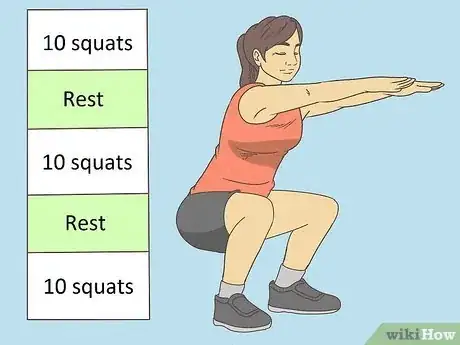




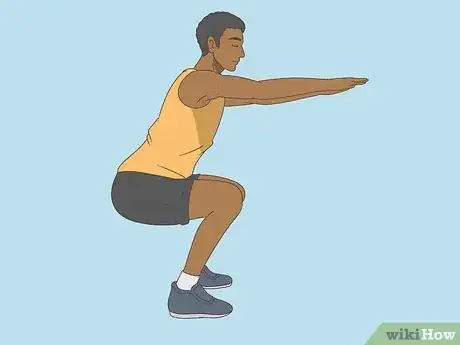
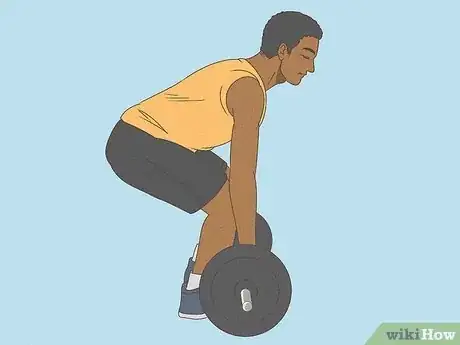
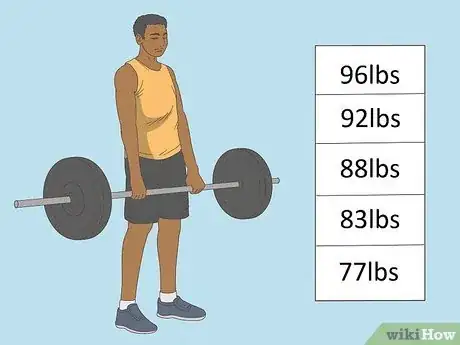

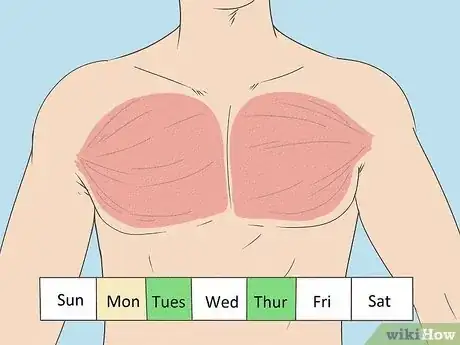



-Step-12.webp)








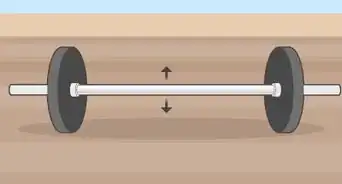










-Step-12.webp)




































